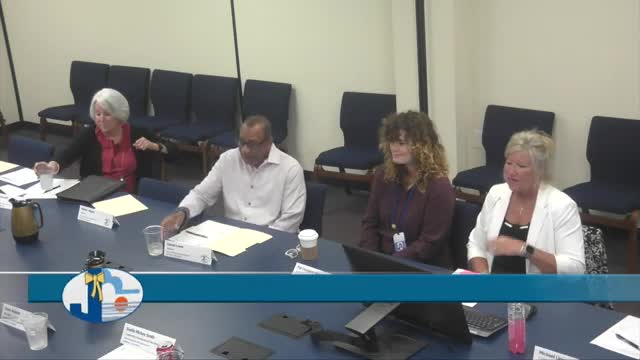Oyster Highway project expands to restore New River ecosystem
October 03, 2024 | Jacksonville, Onslow County, North Carolina
This article was created by AI summarizing key points discussed. AI makes mistakes, so for full details and context, please refer to the video of the full meeting. Please report any errors so we can fix them. Report an error »

In a recent government meeting, officials highlighted the progress and future plans for the Oyster Highway project, a significant environmental initiative aimed at restoring oyster populations in the New River. Initially funded through private donations and grants, including a substantial $16 million from NOAA, the project has evolved into a multi-phase effort to create a network of reefs that facilitate the movement of baby oysters.
The project, which began with cleanup efforts at Sturgeon City and Wilson Bay, has successfully completed its first three phases, each designed to enhance the habitat for oysters. The first two phases involved the establishment of half-acre reefs, while phase three expanded these to one-acre sites. The reefs are constructed using innovative materials, including Oyster Catcher Reefs and Oyster Castle Reefs, designed to provide optimal conditions for oyster attachment and growth.
Looking ahead, phase four will see an even more ambitious approach, with plans to densely populate the reefs with Oyster Castle structures. Over the next three years, the project aims to introduce an additional one million oysters across twelve sites, significantly boosting the ecological health of the river. The oysters will be added manually, while the structures will be delivered via barge and crane.
Officials emphasized the long-term benefits of the project, noting that the increased oyster population will contribute to the natural filtration and replenishment of the New River, ensuring its health for years to come. The Oyster Highway project stands as a testament to community-driven environmental restoration efforts, showcasing the potential for collaborative initiatives to make a lasting impact on local ecosystems.
The project, which began with cleanup efforts at Sturgeon City and Wilson Bay, has successfully completed its first three phases, each designed to enhance the habitat for oysters. The first two phases involved the establishment of half-acre reefs, while phase three expanded these to one-acre sites. The reefs are constructed using innovative materials, including Oyster Catcher Reefs and Oyster Castle Reefs, designed to provide optimal conditions for oyster attachment and growth.
Looking ahead, phase four will see an even more ambitious approach, with plans to densely populate the reefs with Oyster Castle structures. Over the next three years, the project aims to introduce an additional one million oysters across twelve sites, significantly boosting the ecological health of the river. The oysters will be added manually, while the structures will be delivered via barge and crane.
Officials emphasized the long-term benefits of the project, noting that the increased oyster population will contribute to the natural filtration and replenishment of the New River, ensuring its health for years to come. The Oyster Highway project stands as a testament to community-driven environmental restoration efforts, showcasing the potential for collaborative initiatives to make a lasting impact on local ecosystems.
View full meeting
This article is based on a recent meeting—watch the full video and explore the complete transcript for deeper insights into the discussion.
View full meeting
